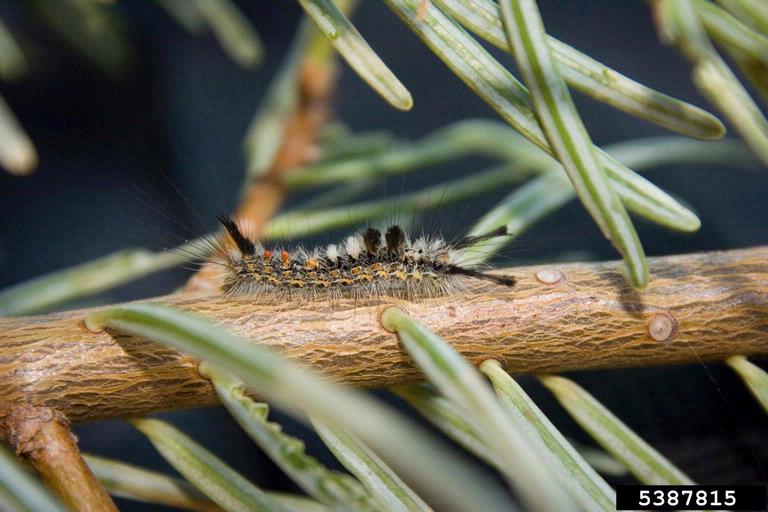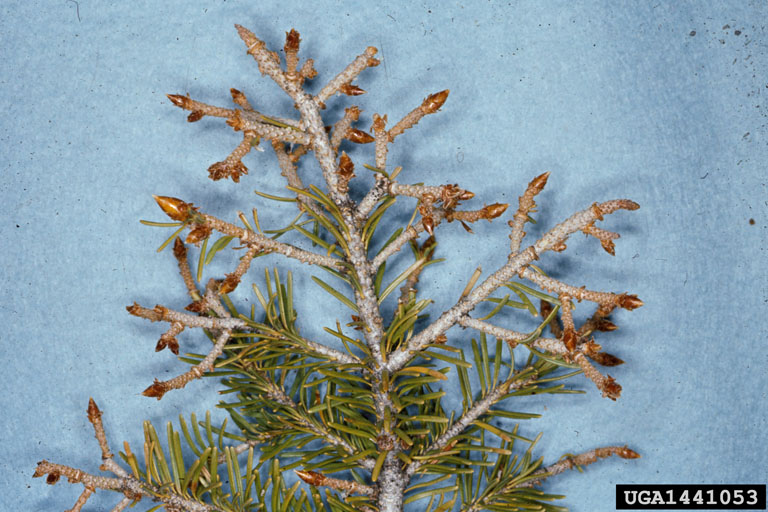Integrated Pest Management
Douglas-fir Tussock Moth
Orgyia pseudotsugata

Adult Douglas-fir tussock moth and pupal case (William M. Ciesla, Forest Health Management International, Bugwood.org)
Pest Description
- adults: wingspan 1 – 2 inches
- larvae: ~ 1 2/5 inches long; black body with prominent, colorful tufts of hair
- pupae: ~ 1 inch long; brown and mixed with hairs; located on or near the host tree
- eggs: laid in masses near pupal cases and covered with hairs from the female
Host Plants, Diet & Damage
- spruce, Douglas-fir, true firs
- feed on new foliage, then older foliage causing brown branch tips
- damage is typically focused on the top of the tree (do not confuse with Ips beetle damage)
- larvae can defoliate branches, killing part or all of the tree
Biology, Life Cycle & Damaging Life Stage
- overwinter as egg masses on host trees
- eggs hatch around mid- to late-May
- larvae migrate or are wind dispersed to new trees
- larvae feed on new needles and later on older needles
- full grown larvae pupate on or around the host tree starting around mid-July to early-August
- adult males fly in late-July to mid-August
- one generation per year in Utah
- larvae are the damaging stage
IPM Recommendations
- Manage trees to improve or maintain overall health.
- Monitor trees for egg masses in early spring.
- Monitor starting in mid-May for egg hatch and larvae.
- Apply an insecticide (Bacillus thuringiensis var. kurstaki; carbamate; diacylhydrazine; pyrethroid) to newly expanded foliage targeting larvae when they are small.



